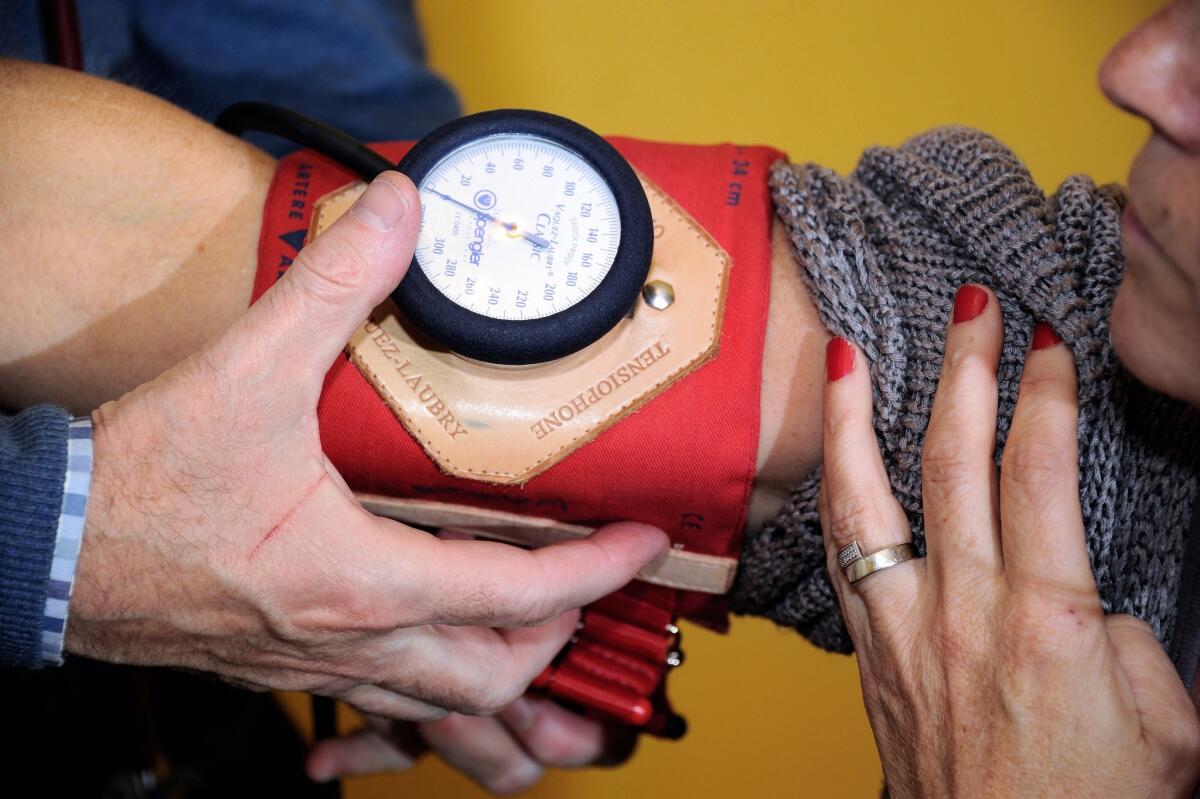Among blacks and whites alike, strokes are down

The nation’s fourth leading cause of death is getting a little less common and a bit less deadly. And while racial disparities remain, there is equal progress in driving down stroke incidence and improving survival among African Americans and white Americans, a new study finds.
Between 1987 and 2011, rates of stroke among a representative sample of Americans who were between 45 and 65 years old upon recruitment declined steadily. A stroke victim’s likelihood of dying also decreased during the period.
The decline in stroke incidence was largely driven by lower rates of stroke among those over 65, as there was no drop in strokes among younger patients. But the improved survival rates were driven by a declining death rate among younger stroke victims--those under 65. Among stroke victims older than 65, there was little improvement in the likelihood of dying within 30 days or a year of suffering a stroke.
In explaining the drop, the authors of the latest study on stroke in America, published Tuesday in the Journal of the American Medical Assn., cited better and more widespread control of risk factors for stroke, including smoking, high blood pressure, high cholesterol, diabetes and atrial fibrillation. Over time, the researchers documented a growth in the proportion of participants taking medications to control hypertension and worrisome cholesterol levels, and a decrease in smoking.
Better stroke treatment--and specifically the institution of specialized stroke centers in U.S. hospitals--was also credited with improving survival rates.
But in an editorial published alongside the new research, a pair of neurologists from the University of Miami’s Miller School of Medicine cautioned that in the years ahead, the trend could well be reversed by an aging generation in which obesity, poor nutrition and sedentary behavior are widespread.
The absence of declining stroke rates among the current study’s younger cohort “could be an early warning sign” of that, wrote Drs. Ralph L. Sacco and Chuanhui Dong.
“Unless health disparities are address and innovative strategies to change behavior are developed and adopted, the cerebrovascular health of the population will be unlikely to improve,” the two wrote.
In the group of 14,357 participants, who were followed by study authors for nearly 22 years, 1,051--7%--suffered a stroke. Most of those--929 strokes--involved an interruption of blood flow to the brain, an ischemic stroke. Hemorrhagic stroke, in which the patient has widespread bleeding in the brain, accounted for 140 of those strokes. Eighteen patients suffered both types of stroke during the study period.
Each year, an estimated 795,000 Americans suffer a stroke, and by the year 2030, 4% of the adult population is expected to have had a stroke, leading to death or disability and an annual national medical bill of $240.67 billion.







